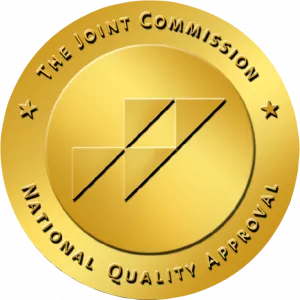What Is Valium?
Valium, generically known as diazepam, is a widely used benzodiazepine drug that’s only legally available via prescription. It is the fourth most commonly prescribed drug in the U.S. Valium is commonly used for:
- Treating anxiety
- Managing alcohol withdrawal
- Controlling seizures
- Treating muscle spasms caused by cerebral palsy - alongside other medications
As is the case with all psychoactive drugs, Valium can be highly addictive when abused or when taken for a long period of time.
Join Avenues Recovery, leaders in addiction rehabilitation, as we unpack why Valium is addictive, common withdrawal symptoms, and easier, safer options of Valium withdrawal.
Why Is Valium Addictive?
Valium works by increasing the neurotransmitter Gamma-aminobutyric acid (GABA), thereby slowing down the central nervous system, putting the user in a relaxed state. Valium's effects happen fast, making addiction to Valium almost inevitable. If taken for a long period, the user will develop a dependency towards the drug. This means that a higher dose will be necessary to achieve the same effects. Trying to stop taking the drug suddenly can be lethal, sometimes leading to coma, due to the intense withdrawal symptoms that could surface.

Valium Withdrawal Symptoms
Valium is a long-acting benzodiazepine, designed to stay in the system longer, thereby delivering prolonged relief from anxiety. The half-life of Valium is about 12 hours, and it can remain in the system for up to 24 hours. Because of this, withdrawal symptoms will begin to appear only 3-4 days after the last dose.
However, exactly when the symptoms begin depends on several factors. These include:
- Size of the dose
- Frequency of doses
- How long it was (ab)used for
- Whether it was taken along with other drugs
- Metabolism of the user
- Emotional and psychological state of the individual
The user’s body becomes dependent on the GABA that Valium produces, and withdrawing from the drug can cause distressing symptoms. Common diazepam withdrawal symptoms can include:
- Abdominal cramps
- Headaches
- Fever
- Tremors
- Fatigue
- Sweating
- Muscle pain
- Vomiting/nausea
- Extreme anxiety
- Lightheadedness
- Insomnia
- Nightmares
- Panic attacks
- Reduced appetite
- Increased heart rate
- Muscle twitching
If the individual was highly addicted to Valium, they may suffer from more serious symptoms, such as seizures, hallucinations, numbness, and coma.

Valium/Diazepam Withdrawal Timeline
Although there is no exact Valium withdrawal timeline, since every individual and experience is different, outlined below is a general basic timeline to show some common Valium detox symptoms and when they usually occur:
1-4 days: Most Valium withdrawals cause symptoms to begin after about 2 days. Physical symptoms such as headache, vomiting, hand tremors, cramps, nausea, increased heart rate, and blood pressure are expected and normal. Rebound symptoms can also be experienced at this point. Ironically, these are symptoms that one used Valium to treat, for example, anxiety, mood swings, depression, cravings for Valium, and panic attacks.
5 days-2 weeks: This is the most intense stage of the diazepam withdrawal process, as this is when symptoms reach their peak.
3-4 weeks: Valium detox symptoms can persist for up to a month, but once the individual has refrained from Valium for 3-4 weeks, the severity will be reduced, and symptoms will become more manageable. The positive aspect of Valium detox will become evident physically and emotionally, and the future will seem brighter for the patient.
After 1 month: At this point in the diazepam detox process, symptoms fade, and recovery is imminent. However, this can be a stage of psychological suffering for some, where symptoms such as depression, suicidal thoughts or intense cravings for the drug can continue until treatment is provided. This stage is referred to as ‘late Valium withdrawal’ or PAWS-post acute withdrawal symptoms.

Valium Detox
Detoxification is a cleansing process where the body clears itself of a certain substance. Valium detox shouldn’t be done solo, as this has been proven to be dangerous. Instead, one should seek medical guidance to learn how to lower the dose effectively. The doctor will assess each situation and personalize a schedule that will help the body rid itself of the drug slowly and learn how to cope without it with less painful withdrawal symptoms. ‘Valium taper’- which means to slowly cut back on Valium - is highly recommended to ensure a safe and effective detox.
The stronger one's addiction to Valium is, the longer the detox process will last, as stopping quickly can shock the system and cause harmful effects on the body.
Treatment Options for Valium Detox
To provide relief from the pain and discomfort of Valium detox, doctors may prescribe the following:
- Flumazenil (Romazicon), a medicine that can help to counteract withdrawal symptoms.
- Baclofen, a muscle relaxant that can help lessen cravings.
- Melatonin, to help manage anxiety and sleep issues.
Enrolling in our inpatient rehab is the best option for effective Valium detox. In this trigger-free environment, one can benefit from 24/7 professional support, both medical and clinical, and thereby manage the withdrawal symptoms in a relaxed and caring setting.

After the detoxification process, the first stage of withdrawing from the drug, further support is necessary to learn what inner issues have led to the addiction. Getting the right emotional and mental support can prevent relapse. Some options include:
- Support groups: These are effective as one is in an informal setting where fellow addicts share their successes and letdowns in a safe and understanding environment. Peer support is helpful as it can motivate, encourage, and inspire individuals to achieve sobriety.
- Therapy: Here, one can open up and share their difficulties, and ultimately gain practical tips on how to avoid one’s personal pitfalls of addiction. CBT is a common choice.
Get Help for Valium Withdrawal
Valium withdrawal may seem impossible - to confront your weaknesses and break habits - but with the help of the professional and dedicated team at Avenues Recovery, it is entirely possible. Our addiction counselors are experts in their fields, and they will stop at nothing to give you the help you deserve. We use evidence-based therapies and personalized treatment plans to enable you to live a life where you, not your addiction, is in control.
Countless people just like you have dared to reach out and take that first step, and are now living addiction-free lives. Contact Avenues Recovery Center today to find out more about our extensive support system. You too can experience premier care and guidance and begin your journey towards a brighter, happier, and sober future.



